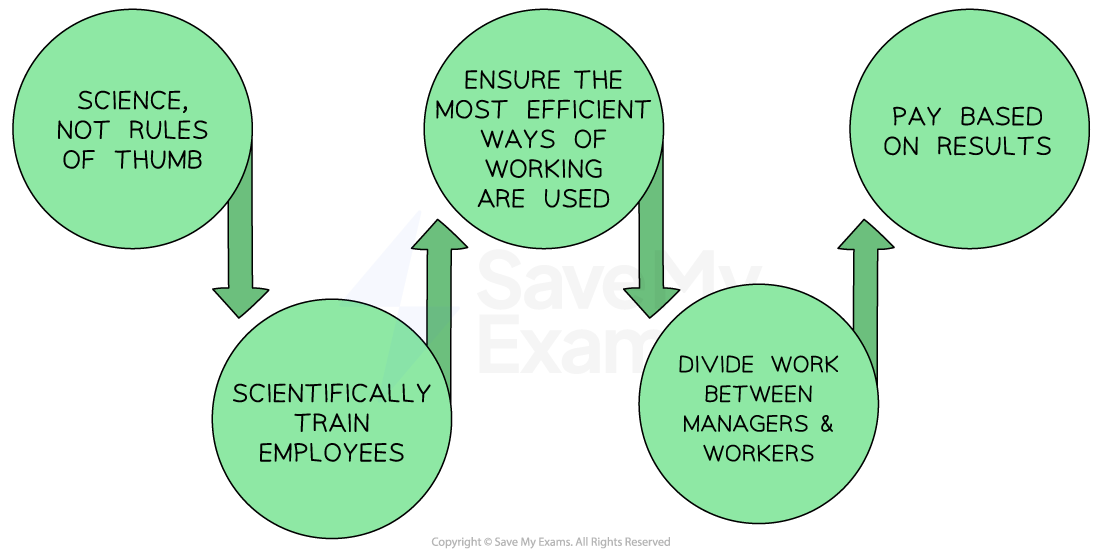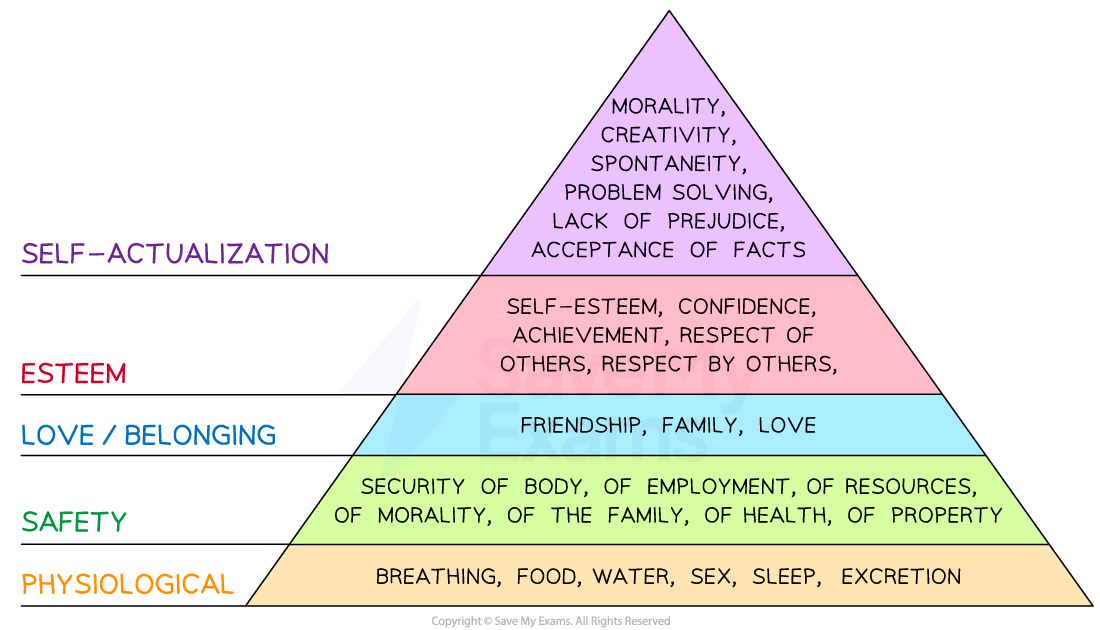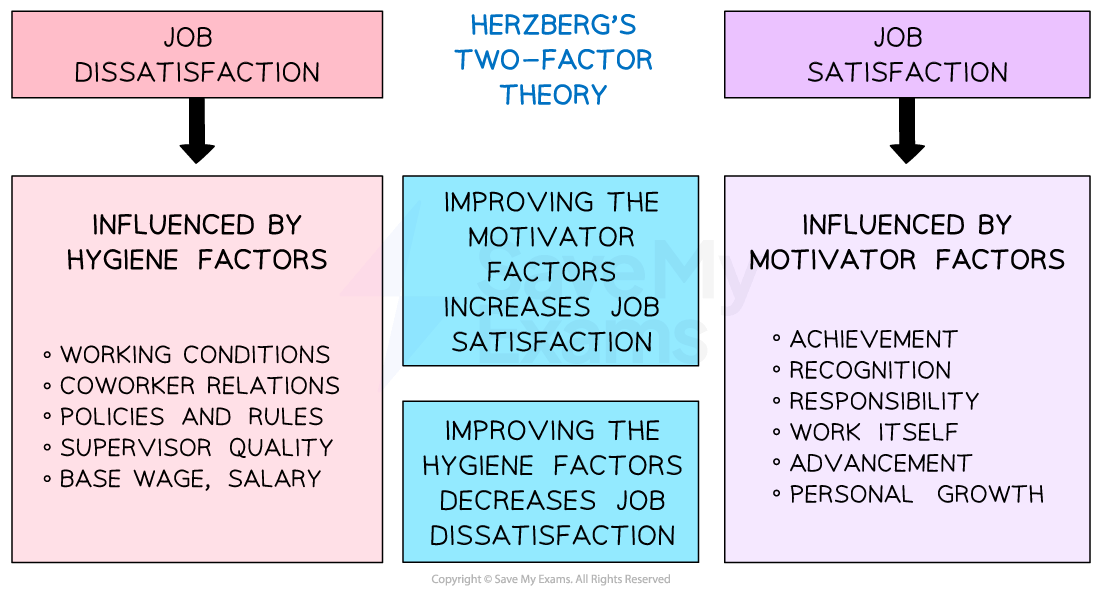Motivation in Theory & Practice (Edexcel A Level Business): Revision Note
Exam code: 9BS0
The importance of employee motivation
Motivation refers to the inner desire or willingness that propels a person to take action and achieve a specific goal or outcome
Motivation can be intrinsic, coming from within a person (values, beliefs, etc.)
Motivation can be extrinsic, coming from external factors (rewards or punishments)
Motivation plays a critical role in a business's success and can have a significant impact on productivity, reliability and loyalty of its workers and labour turnover rates
Motivation and productivity
Motivated employees are more productive and efficient, as they are more likely to be engaged in their work and take the initiative to meet or exceed their goals
They will generate higher levels of output and quality
Increased productivity results in higher profits for the business
Motivation and the reliability of workers
Motivated employees are more likely to be reliable and dependable
They take pride in their job, show up on time, meet deadlines and take fewer sick days
This leads to increased trust between the business and its employees as well as higher productivity
Motivation and staff turnover
Motivated employees are more likely to stay with the company long-term, which reduces the turnover rate
Lower turnover rates reduce the need for costly recruitment and training
Motivation theories: Taylor's Scientific Management
Developed by Frederick Winslow Taylor in the early 20th century
It focuses on breaking down complex tasks into simpler ones, standardising work processes and providing workers with clear instructions and training to achieve maximum efficiency
Many manufacturing businesses use Taylor's principles to structure their staff benefits, e.g. piece-rate pay
Production lines involving human labour are often set up based on these principles
Taylor's approach to staff motivation

Explanation
1. Study and analyse the work process
Carefully analyse each step of the work process
Break down complex tasks into simpler ones, and identify the most efficient and effective way to perform each task
2. Standardise the work process
This involves creating detailed procedures and instructions for each task so that workers can follow these procedures consistently
3. Select and train the workers
Workers should be carefully selected based on their skills and abilities
Train workers to perform their tasks efficiently and effectively
This training includes both technical skills and the proper attitudes and behaviours required to be successful (e.g. patience in a repetitive task)
4. Provide incentives for performance
Scientific management emphasises the use of incentives to motivate workers
This may include bonuses or piece-rate pay
How businesses use Taylor's Scientific Management
How businesses use Taylor's approach | Advantages | Disadvantages |
|---|---|---|
|
|
|
Motivation theories: Mayo's Human Relations Theory
Mayo's Human Relations Theory was developed by Elton Mayo in the 1930s
It focuses on the importance of social factors in the workplace
These include factors such as communication, motivation and job satisfaction
Mayo suggests that the key to improving productivity and job satisfaction lies in understanding and improving the relationships between workers, supervisors and management
How businesses use Mayo's Human Relations Theory
How businesses use Mayo's approach | Advantages | Disadvantages |
|---|---|---|
|
|
|
Motivation theories: Maslow's Hierarchy of Needs
Maslow's Hierarchy of Needs is a theory of human motivation that outlines five tiers of human needs that must be met for individuals to reach their full potential
Maslow's hierarchy

Application of Maslow's Hierarchy of Needs
Physiological needs
Businesses can provide necessities for their employees
E.g. comfortable work environment, access to clean water and food and adequate rest breaks
Safety needs
Businesses can provide job security, fair pay, benefits and safe working conditions for their employees
Love and belonging (social) needs
Businesses can encourage teamwork and generate a sense of community within the workplace
Esteem needs
Businesses can provide recognition for employees' accomplishments and provide a positive work culture that values individual contributions
Self-actualisation needs
Businesses can help employees achieve this need by offering opportunities for employees to pursue their passions and interests
E.g. Barclays was known for supporting elite sportspeople by allowing them time off work during the day to continue their training (the focus was on getting the job done, not having to be in at a certain time)
Evaluation of Maslow's Hierarchy of Needs
Advantages | Disadvantages |
|---|---|
|
|
Motivation theories: Herzberg's Two-Factor Theory
Herzberg's theory suggests that there are two types of factors that affect employee motivation and job satisfaction
Hygiene factors are elements that do not necessarily lead to job satisfaction, but their absence can cause dissatisfaction, which decreases motivation, e.g. poor teamwork in the workplace
Motivators are elements that lead to job satisfaction and motivation, e.g. increased responsibility
Herzberg's Two-factor Theory

Using hygiene factors to decrease dissatisfaction
Pay fair wages and salaries
If an employee is not paid a fair wage for their work, they may become dissatisfied and demotivated
Offer excellent working conditions
If the workplace is dirty, unsafe or uncomfortable, employees may become dissatisfied and demotivated
E.g. Google has a reputation for providing amazing workplaces, which include gourmet restaurants, laundry services and dog care
Offer employment contracts that provide job security
If employees feel that their job is not secure, they may become anxious and demotivated and contribute less to the business goals
Using motivators to increase satisfaction
Build a recognition and rewards culture
When employees are recognised and rewarded for their hard work, they are motivated to continue performing well
E.g. salesperson of the month award
Offer opportunities for growth and development
When employees are given opportunities to learn new skills and advance in their careers, they are motivated to continue working for the company
E.g. set a three-year growth plan that helps the worker move towards an advanced role
Provide challenging work that requires problem-solving
When employees are given challenging work that allows them to use their skills and abilities, they are motivated to continue performing well
Financial incentives to improve performance
Financial incentives are rewards or payments given to employees in return for their labour or improved performance
Motivation theory and financial incentives
Incentive type | Explanation | Motivational theories |
|---|---|---|
Piecework |
|
|
Commission |
|
|
Bonus |
|
|
Profit share |
|
|
Performance-related pay |
|
|
Non-financial incentives to improve performance
Non-financial incentives are rewards or motivators not directly related to money
These incentives are usually intangible and include methods that lead to recognition, praise, job satisfaction and work-life balance
Motivational theory and non-financial incentives
Incentive type | Explanation | Motivational theories |
|---|---|---|
Delegation |
|
|
Consultation |
|
|
Empowerment |
|
|
Teamworking |
|
|
Flexible working |
|
|
Job enrichment |
|
|
Job rotation |
|
|
Job enlargement |
|
|
Examiner Tips and Tricks
When you are asked to assess a compensation package that a business wants to offer, there are several factors you should consider before answering:
The context of the business: Is it a manufacturing facility or a team of creative designers?
The industry norms: Does the data provide any insight into what competitors are doing?
The balance of the compensation package: ideally, it should include appropriate financial and non-financial incentives to maximise employee productivity and retention.
The case study usually provides good data, which helps you to answer the above questions and base your answer on, so refer to it as supporting evidence.

Unlock more, it's free!
Did this page help you?